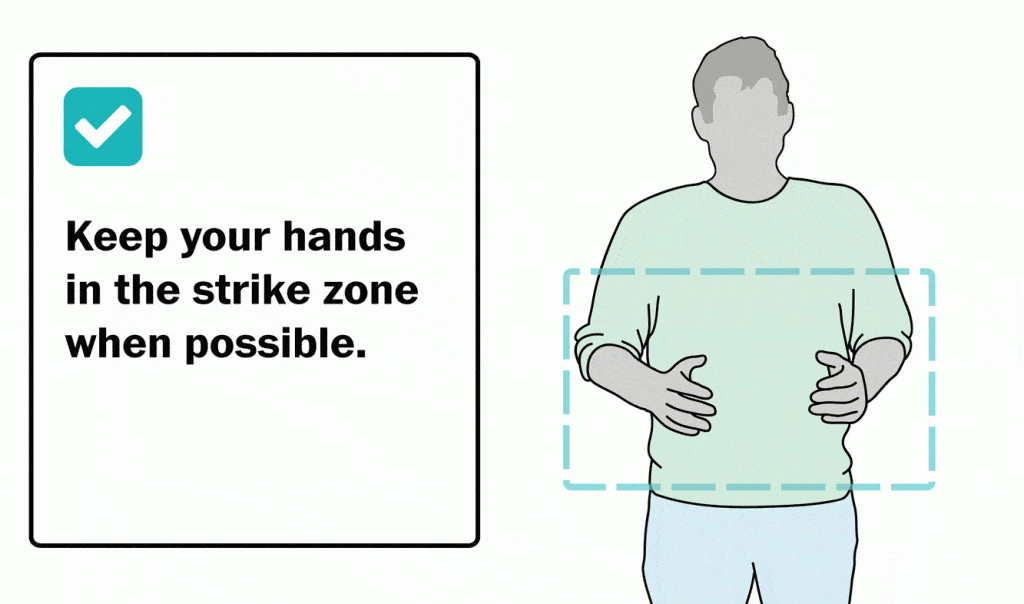You’re almost reaching the end of your presentation. You think to yourself you’ve done a fantastic job and would give yourself a pat on the back if you could, but wait!
It’s the audience. They stare at you blankly. Some yawn, some cross their arms and some look like they’re almost passed out on the ground.
Having a presentation where the audience pays more attention to their nails than hearing you speak is not ideal. Knowing what not to do is the key to learning, growing, and delivering many killer speeches.
Here are 7 bad public speaking mistakes you’ll want to avoid, along with real-life examples and remedies to fix them in a flash.
- Public Speaking Tips with AhaSlides
- Bad public speaking mistake 1: Forget your audience
- Bad public speaking mistake 2: Overload the audience with information
- Bad public speaking mistake 3: Boring visual aids
- Bad public speaking mistake 4: Read off the slides or the cue cards
- Bad public speaking mistake 5: Distracting gestures
- Bad public speaking mistake 6: Lack of pauses
- Bad public speaking mistake 7: Drag the presentation way longer than it should
Public Speaking Tips with AhaSlides
- Public Speaking Definitive Guide
- Fear of Public Speaking
- Why Public Speaking is Important
- Death by PowerPoint
Bad public speaking mistake 1: Forget your audience
If you start ‘firing’ information at your audience without knowing where they stand, you’re gonna miss the mark entirely. You might think you’re giving them useful pieces of advice, but if that particular audience isn’t interested in what you’re saying, chances are they probably won’t appreciate it.
We’ve seen so many ineffective public speakers who either:
- Deliver generic, common knowledge that brings no value, or…
- Provide abstract stories and vague terminologies that the audience cannot understand.
And what’s left for the audience in the end? Maybe a big, fat question mark to capture the confusion lingering in the air…
What you can do:
- Understand what motivates the audience by engaging with them beforehand, through email, 1-1 phone call, etc., to learn their interests as much as possible.
- Map out the audience demographics: gender, age, occupation, etc.
- Ask questions before a presentation such as What brings you here?, or What do you expect to hear from my talk? You can poll your audience quickly to see what they are after and how you can help them.
Bad public speaking mistake 2: Overload the audience with information
Let’s face it, we have all been there. We feared the audience wouldn’t be able to understand our speech, so we tried to jam in as much content as possible.
When the audience is bombarded with too much information, they will take more time and effort to process it. Instead of filling the audience with inspiration, we take them for a literal mental workout that they didn’t expect, which causes their attention and retention to drop significantly.
Check this bad presentation example to see what we mean…
Not only does the presenter put too much clutter on the slides, she also explains everything with complicated terminology and in a very disorganised manner. You can see from the audience’s reaction that they are not happy about it.
What you can do:
- To avoid clutter, speakers should eliminate unnecessary information in their speech. In the planning phase, always ask yourself: “Is it necessary for the audience to know?”.
- Make the outline starting from the key result you want to achieve, then draw what points you have to make in order to get there - they should be the things you need to mention.
Bad public speaking mistake 3: Boring visual aids
A good presentation always needs a visual companion to aid, illustrate, and consolidate what the presenter is saying, especially when you’ve visualising data.
This is not a point pulled out of thin air. One study found that about three hours after the presentation, 85% of people were able to remember content presented visually, while only 70% could remember content presented by voice alone.
After three days, only 10% of the participants could remember the content presented by voice, while 60% could still recall the content presented visually.
So if you’re not a believer in using visual aids, this is the time to reconsider…
What you can do:
- Turn your lengthy points into charts/bars/pictures if possible because they’re easier to comprehend than just words.
- Refresh your speech with a visual element, such as videos, images, animation, and transitions. These can have a surprisingly big impact on your audience.
- Remember any visual aid there is to support your message, not distract people from it.

Take this bad presentation for example. Each bullet point is animated differently, and the whole slide takes decades to load. There are no other visual elements like images or graphs to look at and the text is way too tiny to be legible.
Bad public speaking mistake 4: Read off the slides or the cue cards
How do you let the audience know you’re not well-prepared or confident with your speech?
You read the content on the slides or the cue cards, without taking one second to glance at the audience the whole time!
Now, look at this presentation:
You can see that in this bad speech, the presenter takes no break from looking at the screen, and from multiple angles as if he’s checking out a car to buy. There are evidently more issues in this bad public speaking video: the speaker is constantly facing the wrong way and there’s an enormous amount of text that looks like it was copied straight from the web.
What you can do:
- Practice.
- Go back to point 1.
- Practice until you can throw your cue cards away.
- Don’t write all the details on the presentation or the cue cards if you don't want to bring poor speeches. Check out the 10/20/30 rule for a neat guide on how to keep text minimal and avoid the temptation to read them out loud.
Bad public speaking mistake 5: Distracting gestures
Ever done any of these during a presentation?👇
- Avoid eye contact
- Fidget with your hands
- Stand like a statue
- Move around constantly
These are all the subconscious gestures that distract people from properly listening to your speech. These may seem like small details, but they can give off big vibes that you may not be confident in your talk at all.
🏆 Small challenge: count the number of times this speaker touched her hair:
What you can do:
- Be mindful of your arms. Arm gestures are not hard to fix and can be calculated. Some of the suggested hand gestures are:
- Open your palms while making outstretched gestures to show the audience you have nothing to hide.
- Keep your hands open in the “strike zone”, since it’s a natural area in which to gesture.

- If you’re scared of looking at other people’s eyes, look at their foreheads instead. You’ll still stay truthful while the audience won’t notice the difference.
Bad public speaking mistake 6: Lack of pauses
We understand the pressure of delivering all the vital info in a short period of time, but mindlessly running through the content without seeing how well the audience receives it is the best way to see a wall of unengaged faces.
Your audience can only absorb a certain amount of information without a break. Using pauses gives them time to reflect on your words and the chance to connect what you’re saying to their own experiences in real-time.
What you can do:
- Listen to a recording of yourself speaking.
- Practice reading out loud and pausing after each sentence.
- Keep the sentences short to eliminate the feel of lengthy, rap-like speeches.
- Understand when to pause while speaking in public. For example:
> When you’re about to say something important: you can use a pause to signal the audience to pay close attention to the next thing you say.
> When you need the audience to reflect: you can pause after giving them a question or a topic to think about.
> When you want to avoid filler words: you can pause a little bit to calm yourself down and avoid filler words such as “like”, or “um”.
Bad public speaking mistake 7: Drag the presentation way longer than it should
If the presentation duration you promised to deliver is only 10 minutes, dragging it to 15 or 20 minutes will break the audience’s trust. Time is a sacred thing and a scarce resource for busy people (they might have a Tinder date after this; you never know!)
Check this example of public speaking by Kanye West.
He touched on racial inequality - a heavy topic that required a lot of research, but one that he apparently didn’t do as the crowd had to sit through the first four minutes of meaningless rambling.
What you can do:
- Practice timeboxing: for instance, if you’re doing a 5-minute presentation, you should follow this outline:
- 30 seconds for the introduction - 1 minute for stating the problem - 3 minutes for the solution - 30 seconds for the conclusion - (Optional) a Q&A section.
- Stop beating around the bush. Put anything that can be printed on the booklet, the agenda, or anything that requires a big chunk of time to explain out of your presentation. Focus on what matters most to the audience.
The Final Word
Knowing what makes a bad speech brings you a huge step closer to making a good one. It gives you a solid foundation on which to avoid the standard mistakes and deliver a professional, unique presentation that genuinely delights your crowd.
To prevent people from brandishing pitchforks and making angry faces 😠 make sure to revisit every mistake and bad public speaking examples above. Use the tips in each section to make sure you’re not coming to the talk unprepared.






